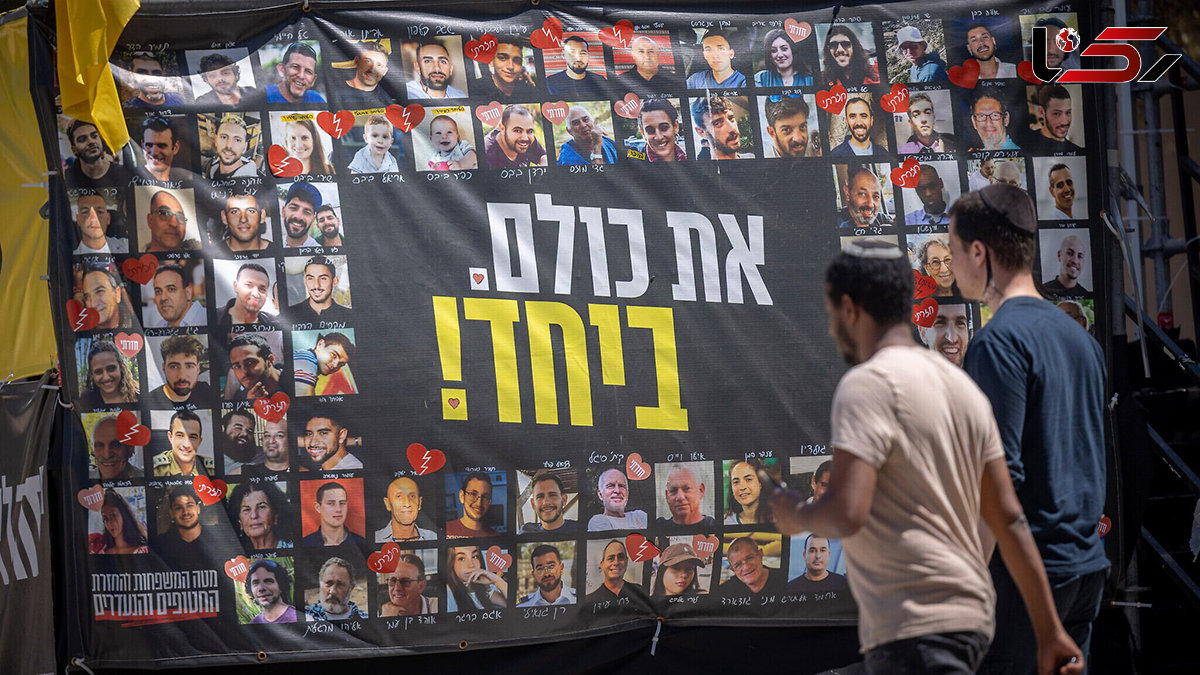Israel and Gaza set to begin large-scale release of hostages and prisoners
Rokna Political Desk: Israel and Gaza are preparing for a major exchange of hostages and prisoners under a new ceasefire deal that could bring an end to the two-year war in Gaza, with 48 Israelis and nearly 2,000 Palestinians set to be released as part of the agreement.

Forty-eight Israelis and nearly 2,000 Palestinians to be freed under ceasefire accord as Trump heads to region
According to Rokna, citing The Guardian, authorities in Israel and Gaza are finalizing preparations for the exchange of Israeli hostages and Palestinian prisoners ahead of Monday’s deadline outlined in the ceasefire agreement that could mark the end of the two-year war in Gaza.
Under the terms of the deal, Hamas is required to free all surviving Israeli hostages within 72 hours of signing the accord — a window that closes at noon local time (10.00 BST). The group is believed to be holding 48 hostages, with roughly 20 thought to be alive.
An international taskforce is expected to begin searching for the remains of those hostages who are not released by Monday, many of whom are believed to be buried beneath the ruins scattered across the devastated enclave.
On the Israeli side, officials will release nearly 2,000 Palestinian detainees, most of whom will either be transferred to Gaza or exiled to neighboring countries. The precise timing of their release has yet to be confirmed.
US President Donald Trump will arrive in Jerusalem on Monday to deliver an address at the Knesset, coinciding with the prisoner exchange, and will also meet families of the released hostages. Later in the day, Trump will travel to Sharm el-Sheikh to co-chair a “peace summit” alongside leaders from more than 20 nations, aiming to consolidate a lasting truce in Gaza.
Despite uncertainty surrounding the deal’s implementation, Trump voiced optimism that the ceasefire would hold. “They’re all exhausted from the fighting,” he said at the White House, emphasizing that there was now a “shared understanding” of the path forward.
The exchange marks the first stage of Trump’s 20-point plan to end the Gaza conflict. A fragile ceasefire has been in place since Friday afternoon, but the detailed framework for a permanent peace is still under negotiation.
Across Gaza, residents expressed hope that this temporary calm would evolve into a permanent end to hostilities. Over two years of Israeli bombardment have left much of the territory in ruins, killing more than 67,000 Palestinians and injuring around 170,000. Israel faces accusations of genocide from a UN commission of inquiry and several human rights organizations, charges it strongly rejects, insisting its actions constitute self-defense in response to the Hamas-led attacks of October two years ago, which killed about 1,200 people and led to the capture of 251 hostages.
In Israel, preparations have intensified to receive the hostages. They will first be taken to a military base for medical evaluations before being transferred to hospitals. Medical facilities across the country have rehearsed the process using actors to simulate the hostages’ arrival.
“We’re overwhelmed with anticipation, waiting for our son and for all 48 hostages,” said Hagai Angrest, whose son Matan remains captive in Gaza.
On Sunday evening, thousands gathered in Tel Aviv’s “Hostages Square” to celebrate, cheering as US Middle East envoy Steve Witkoff and Trump’s son-in-law Jared Kushner addressed the crowd. “I’ve dreamed of this moment — it’s been a long road,” said Witkoff, receiving loud applause for Trump’s efforts, though boos erupted at the mention of Israeli Prime Minister Benjamin Netanyahu.
Meanwhile, families across the occupied West Bank prepared to welcome relatives returning from Israeli prisons. Authorities instructed them to avoid public displays of celebration and to limit engagement with the media.
The approximately 2,000 Palestinian prisoners set for release include around 1,700 detainees from Gaza and 250 long-term inmates, among them senior Palestinian political figures. Roughly half of the 250 are to be sent to Gaza or neighboring countries, while the rest will return to the West Bank or East Jerusalem.
As preparations for the exchange advanced, humanitarian agencies geared up to resume aid deliveries into Gaza. The Israeli military’s Coordination of Government Activities in the Territories (COGAT) announced that roughly 600 trucks would begin entering the enclave daily starting Sunday — restoring aid flow to near pre-war levels after months of severe restriction.
The United Nations confirmed that some 170,000 metric tons of food, medicine, and other humanitarian supplies are ready for delivery once Israel authorizes their entry. Priority items include tents, high-energy food for malnourished children, and hygiene kits for women.
This renewed aid access comes after months of blockade that triggered famine conditions in parts of Gaza, according to global food security experts. Since May, widespread starvation has claimed at least 459 lives.
Under the Trump plan, regular UN-coordinated aid operations will resume after a months-long suspension imposed by Israel. The future of the Gaza Humanitarian Foundation (GHF) — a private organization that temporarily replaced the UN in managing aid distribution — remains uncertain. Its distribution centers in Gaza halted operations following the ceasefire announcement.
The GHF has been widely criticized for its chaotic and militarized aid system, which led to overcrowding and violence. More than 1,000 people were killed in shootings during frantic attempts to access food at its facilities. The foundation has consistently denied responsibility for the fatalities.
In addition, the United States will deploy up to 200 military personnel to Israel to help establish a new stabilization taskforce, the Civil-Military Coordination Center (CMCC). No American troops will enter Gaza; instead, they will advise the CMCC from Israeli territory.
US Central Command chief Adm. Brad Cooper met with Israeli military head Eyal Zamir during a visit to Gaza alongside Witkoff and Kushner, emphasizing that his mission was to support the creation of the CMCC and coordinate humanitarian stabilization efforts.
Send Comments